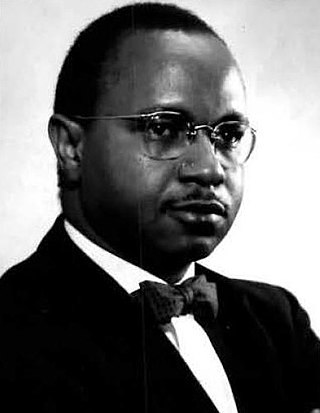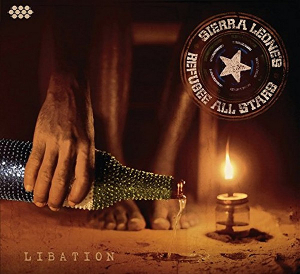
Sierra Leone, officially the Republic of Sierra Leone, is a country on the southwest coast of West Africa. It is bordered to the southeast by Liberia and by Guinea to the north. Its land area is 71,740 km2 (27,699 sq mi). It has a tropical climate and environments ranging from savannas to rainforests. As of the 2023 census, Sierra Leone has a population of 8,908,040. Freetown is both its capital and its largest city. The country is divided into five administrative regions, which are further subdivided into 16 districts.
Sierra Leone first became inhabited by indigenous African peoples at least 2,500 years ago. The Limba were the first tribe known to inhabit Sierra Leone. The dense tropical rainforest partially isolated the region from other West African cultures, and it became a refuge for peoples escaping violence and jihads. Sierra Leone was named by Portuguese explorer Pedro de Sintra, who mapped the region in 1462. The Freetown estuary provided a good natural harbour for ships to shelter and replenish drinking water, and gained more international attention as coastal and trans-Atlantic trade supplanted trans-Saharan trade.

The Sierra Leonean Creole or Krio is an English-based creole language that is the lingua franca and de facto national language spoken throughout the West African nation of Sierra Leone. Krio is spoken by 96 percent of the country's population, and it unites the different ethnic groups in the country, especially in their trade and social interaction with each other. Krio is the primary language of communication among Sierra Leoneans at home and abroad, and has also heavily influenced Sierra Leonean English. The language is native to the Sierra Leone Creole people, or Krios, a community of about 104,311 descendants of freed slaves from the West Indies, Canada, United States and the British Empire, and is spoken as a second language by millions of other Sierra Leoneans belonging to the country's indigenous tribes. Krio, along with English, is the official language of Sierra Leone.
Gumbe, also goombay or gumbay, is a West African style of music found in countries such as Sierra Leone and Guinea-Bissau. Sierra Leonean gumbe music is indigenous to the Sierra Leone Krio people and was derived from the Jamaican Maroon ancestors of the Krio people. Krio musicians such as Ebenezer Calendar and Dr Oloh popularized gumbe music in Sierra Leone and in other West African locales.

The Temne, also called Atemne, Témené, Temné, Téminè, Temeni, Thaimne, Themne, Thimni, Timené, Timné, Timmani, or Timni, are a West African ethnic group. They are predominantly found in the Northern Province of Sierra Leone. Some Temne are also found in Guinea. The Temne constitute the largest ethnic group in Sierra Leone, at 35.5% of the total population, which is slightly bigger than the Mende people at 31.2%. They speak Temne, which belongs to the Mel branch of the Niger–Congo languages.

Sierra Leone's Refugee All Stars is a band from Sierra Leone which was formed by a group of refugees displaced to Guinea during the Sierra Leone Civil War. Since their return to Freetown in 2004, the band has toured extensively to raise awareness for humanitarian causes. Their story is documented in the 2005 documentary film Sierra Leone's Refugee All Stars.
Israel Olorunfeh Cole better known by his stage name Dr. Oloh was a Sierra Leonean afropop and Jazz musician. Dr Oloh is widely considered one of the biggest musicians from Sierra Leone. His hit singles were very popular in Sierra Leone in the 1970s, 1980s and early 1990s.
The Jamaican Maroons in Sierra Leone were a group of just under 600 Jamaican Maroons from Cudjoe's Town, the largest of the five Jamaican maroon towns who were deported by the British authorities in Jamaica following the Second Maroon War in 1796, first to Nova Scotia. Four years later in 1800, they were transported to Sierra Leone.
The gumbe or bench drum is a frame drum found in French Guiana, Jamaica and Sierra Leone. It has a small size, with square frame and one head of goat skin.
Sierra Leonean Americans are an ethnic group of Americans of full or partial Sierra Leonean ancestry. This includes Sierra Leone Creoles whose ancestors were African American Black Loyalists freed after fighting on the side of the British during the American Revolutionary War. Some African Americans trace their roots to indigenous enslaved Sierra Leoneans exported to the United States between the 18th and early 19th century. In particular, the Gullah people of partial Sierra Leonean ancestry, fled their owners and settled in parts of South Carolina, Georgia, and the Sea Islands, where they still retain their cultural heritage. The first wave of Sierra Leoneans to the United States, after the slavery period, was after the Sierra Leone Civil War in the 1990s and early 2000s. According to the American Community Survey, there are 34,161 Sierra Leonean immigrants living in the United States.

Living Like a Refugee is the debut album from Sierra Leonian band Sierra Leone's Refugee All Stars, released in the Europe on 25 September 2006 and in the United States on 26 September 2006.

Macormack Charles Farrell Easmon, OBE, popularly known as M. C. F. Easmon or "Charlie", was a Sierra Leone Creole born in Accra in the Gold Coast, where his father John Farrell Easmon, a prominent Creole medical doctor, was working at the time. He belonged to the notable Easmon family of Sierra Leone, a Creole family of African-American descent.

Sierra Leone is home to around sixteen ethnic groups, each with its own language. In Sierra Leone, membership of an ethnic group often overlaps with a shared religious identity. According to the 2004 census Temne is the largest ethnic group in Sierra Leone.

The Sierra Leone Creole people are an ethnic group of Sierra Leone. The Sierra Leone Creole people are descendants of freed African-American, Afro-Caribbean, and Liberated African slaves who settled in the Western Area of Sierra Leone between 1787 and about 1885. The colony was established by the British, supported by abolitionists, under the Sierra Leone Company as a place for freedmen. The settlers called their new settlement Freetown. Today, the Sierra Leone Creoles are 1.2 percent of the population of Sierra Leone.

Arthur Thomas Daniel Porter III was a Creole professor, historian, and author. His book on the Sierra Leone Creole people, Creoledom: A study of the development of Freetown society, examines their society in a way in which few books of their time period had, and it is one of the most quoted books on the Creoles. He was published in East Africa and the UK.

Libation (2014) is the fourth album by Sierra Leone's Refugee All Stars, following Radio Salone (2012). It was produced by Canadian singer-songwriter Chris Velan, mixed by Iestyn Polson, and recorded at Lane Gibson Recording & Mastering in Charlotte, Vermont. The album celebrates the band's 10-year anniversary with a "return to roots, specifically the acoustic "around the campfire" vibe of their earliest recordings." Their sound combines elements of highlife, palm wine, maringa, baskeda and gumbe with modern dubstep and reggae.

The Oku people or the Aku Marabout or Aku Mohammedans are an ethnic group in Sierra Leone and the Gambia, primarily the descendants of marabout, liberated Yoruba people who were released from slave ships and resettled in Sierra Leone as Liberated Africans or came as settlers in the mid-19th century.
Ebenezer Calendar (1912–1985), or Ebenezer Calender, was a Sierra Leone Creole palm-wine musician who popularized Creole gumbe and palm-wine music in Sierra Leone and West Africa. Calendar heavily influenced Dr Oloh and other Sierra Leonean musicians. Ebenezer Calendar formed the music group, Ebenezer Calendar & His Maringa Band which was popular between the early to middle twentieth centuries.












